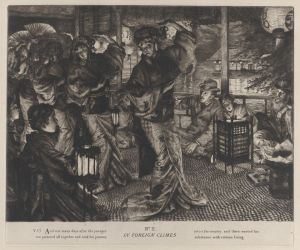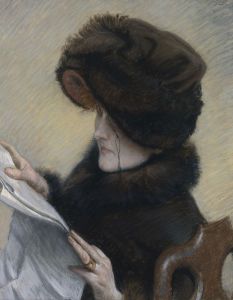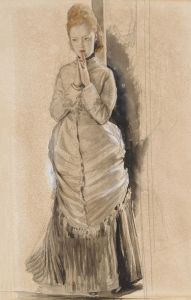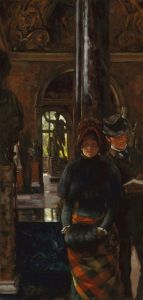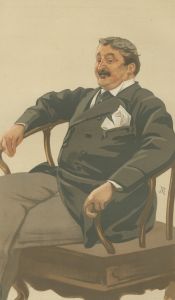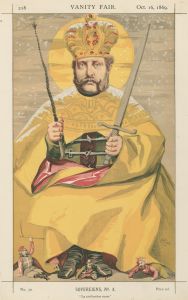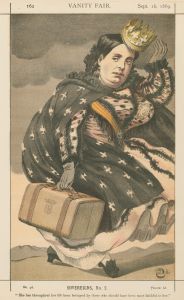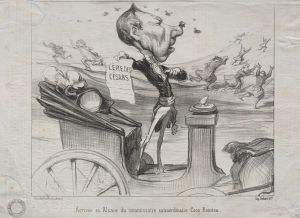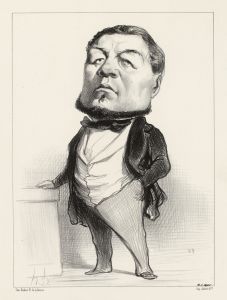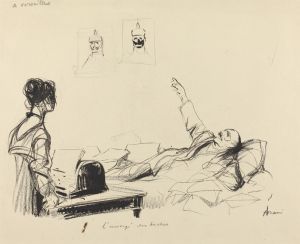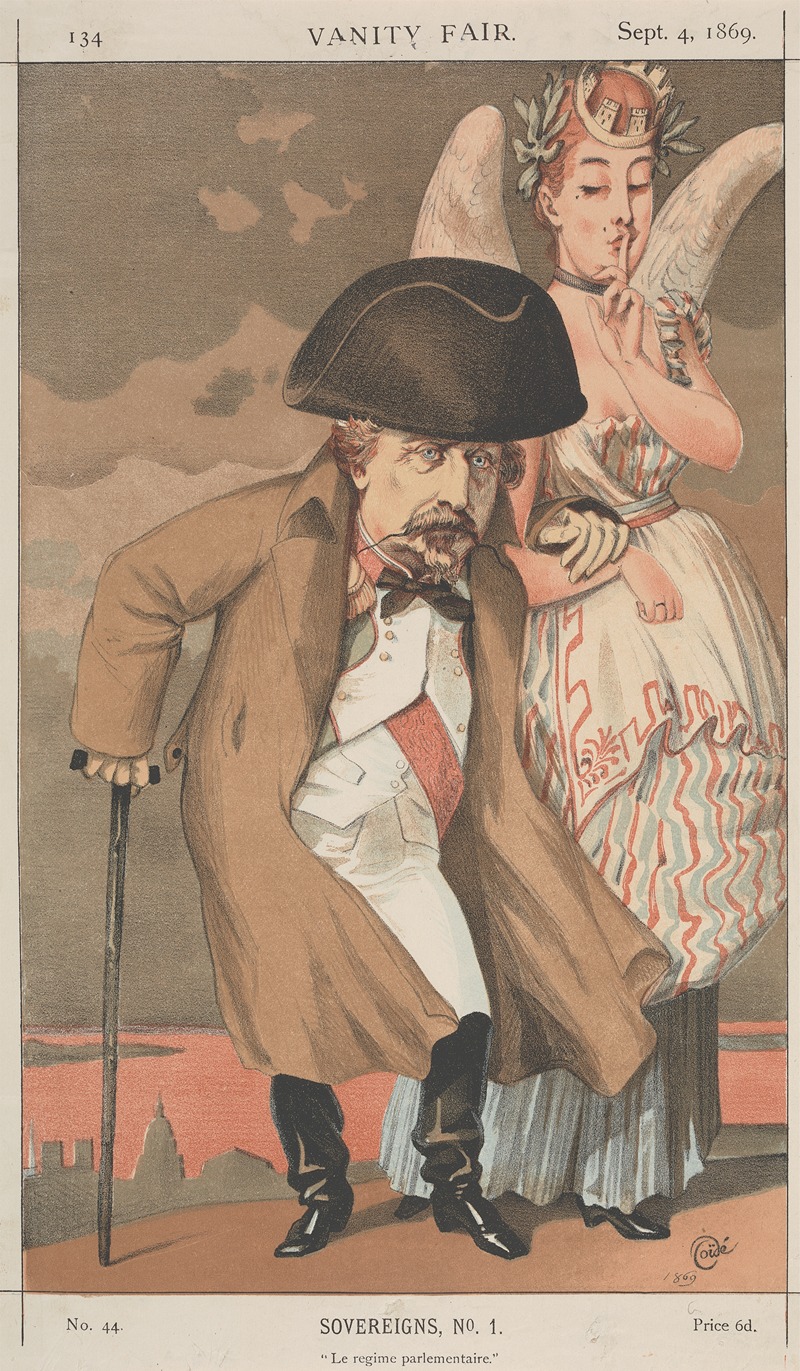
Sovereigns, ‘Le Regime Parlementaire’, , from ‘Vanity Fair’
A hand-painted replica of James Tissot’s masterpiece Sovereigns, ‘Le Regime Parlementaire’, , from ‘Vanity Fair’, meticulously crafted by professional artists to capture the true essence of the original. Each piece is created with museum-quality canvas and rare mineral pigments, carefully painted by experienced artists with delicate brushstrokes and rich, layered colors to perfectly recreate the texture of the original artwork. Unlike machine-printed reproductions, this hand-painted version brings the painting to life, infused with the artist’s emotions and skill in every stroke. Whether for personal collection or home decoration, it instantly elevates the artistic atmosphere of any space.
James Tissot's painting Sovereigns, ‘Le Regime Parlementaire’ is a work created as part of his contributions to the satirical magazine Vanity Fair. Tissot, a French painter and illustrator, was known for his detailed and often socially observant works, which frequently depicted scenes of contemporary life and society. This particular painting is part of his broader body of work that reflects his engagement with political and cultural themes of the 19th century.
The title, Le Regime Parlementaire, translates to "The Parliamentary Regime," suggesting a focus on the political systems or figures of the time. The painting was likely intended to comment on or satirize aspects of parliamentary governance or the individuals involved in such systems. Tissot's collaboration with Vanity Fair placed him in a context where caricature and social commentary were central, and this work aligns with the magazine's tradition of blending art with political and societal critique.
The painting features a group of figures, presumably sovereigns or political leaders, rendered in Tissot's characteristic style, which combines realism with a touch of theatricality. The composition and attire of the figures may reflect the fashion and hierarchical structures of the period, though the exact identities of the individuals depicted are not specified in available records. Tissot's ability to capture personality and status through posture, expression, and costume is evident in this work, as in many of his other portraits and illustrations.
James Tissot (1836–1902) was a prominent artist during his lifetime, gaining recognition in both France and England. After moving to London in 1871, he became associated with the Aesthetic Movement and developed a reputation for his depictions of modern life, particularly scenes involving the upper classes. His work for Vanity Fair allowed him to explore themes of power, politics, and society through a satirical lens.
While Sovereigns, ‘Le Regime Parlementaire’ is not among Tissot's most widely studied or exhibited works, it remains an example of his versatility as an artist and his engagement with the political and cultural currents of his time. Further details about the painting's specific context, reception, or provenance are not extensively documented in available historical sources.





